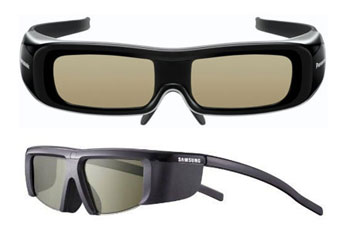Japanese HDTV manufacturer Panasonic has teamed up with 3D technology specialist XpanD to propose a new standard for active-shutter 3D glasses. Dubbed “M-3DI”, the initiative aims to improve cross-compatibility between 3D eyewear and a wide range of 3D TV displays, PCs, projectors and 3D cinemas, which in turn will hopefully increase the mass market penetration of 3D entertainment among the public.

A licensing body called M-3DI License Agent will begin operation next month, responsible for not only devising the universal communication protocol between 3D glasses and front-end tri-dimensional displays, but also maintaining quality control of the approved products. A number of consumer electronics companies (including Hitachi, Mitsubishi, SIM2, Hisense, Changhong, Seiko Epson and Viewsonic) have agreed to support the new 3D active-shutter standard, but it is unknown which of them will have a say in establishing the specifications for M-3DI. At present the standard uses infrared signals to synchronise between 3D displays and glasses, though radio frequency will be considered for the next phase.
The forces behind the initiative believe that creating an industry-wide standard will make consumers less hesitant about investing in a 3DTV or 3D projector to join the extra-dimensional revolution. The M-3DI proponents also enthused about the possibility of wearing the same pair of 3D active-shutter glasses (ASG) to watch 3D content across all types of compatible 3D displays as well as at 3D movie theatres.
However noble Panasonic’s and XpanD’s intentions are, a common standard is only truly useful if everyone is on board, and so far other major 3D television makers have shown no signs that they plan to commit to a universal standard, let alone join the M-3DI initiative. Market leader Samsung has started utilising Bluetooth technology on its 2011 3D glasses, whereas its cross-town rival LG is heavily pushing FPR (film patterned retarder) passive 3D LCD technology. Earlier this month, America’s trade organisation Consumer Electronics Association (CEA) invited interested parties to submit proposals for 3D ASG standardisation, which, when finalised, will probably be different from M-3DI.